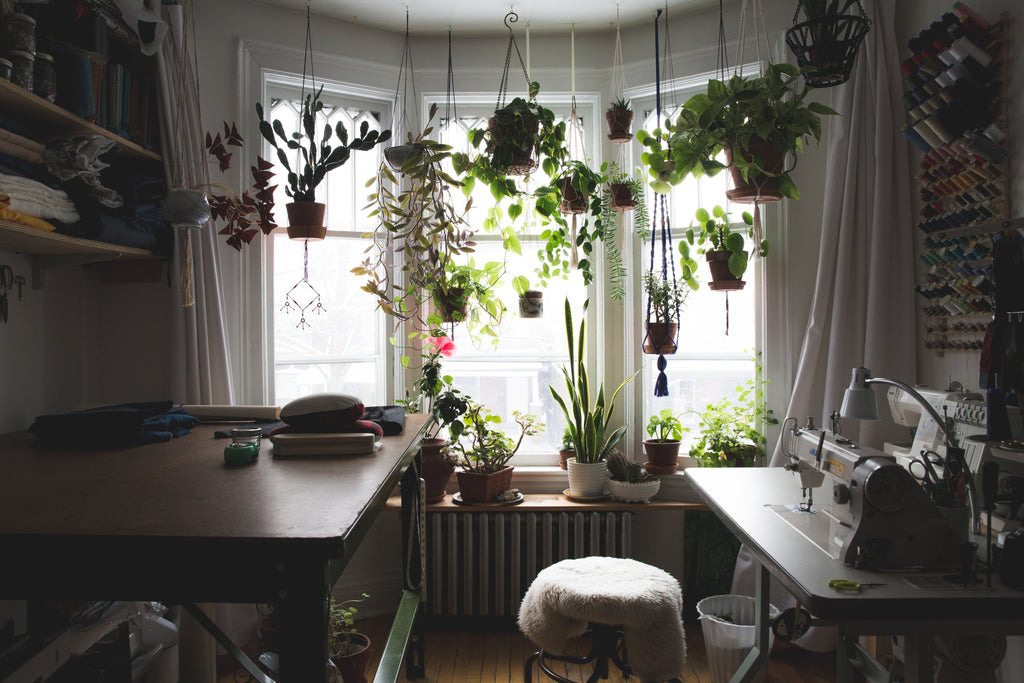New sewists are often thrown tons of foreign terminology when they begin sewing; this can lead many new sewers to get overwhelmed and throw in the towel after listening to hours worth of youtube videos! We’re here to solve the mystery of these 15 commonly used sewing terms every sewer should know!
1. Backstitch
Backstitching is imperative to secure a line of stitches. Backstitching simply means you overlap the stitches at the beginning and end of a stitching line. The Backstitch is 1-3 stitches typically done by machine, in the opposite direction and directly on top of the previously-made stitches. After backstitching, one should continue to sew the rest of the seam, and repeat the backstitching process at the end of the stitching line.
2. Baste
Basting is a temporary straight stitch used to hold layers together until a final stitch is sewn. Make sure it's a long, loose stitch, so your basting stitch is easy to remove after you’ve completed your sewing project.
3. Clip
For concave curves, you simply clip, or snip, into the seam allowance at a vertical angle to the stitching. You want to get as close to the stitching as possible, without actually clipping through it. ... You just sew a 5/8″ staystitch around the edge of the curve (the skirt waist), and then clip as described above.
4. Edgestitch
Edgestitching is traditionally sewn between 1/8″ and 3/8″ away from an edge at a regular stitch length. This narrow stitching is used to keep pressed seams in place and can be commonly seen on waistbands, necklines, binding, and anywhere a garment needs subtle stitching.
5. Standard foot
The standard foot comes with most sewing machines. The standard foot is used for most available stitches including, the straight and zig zag stitches.
6. Gather
Gathering is a common sewing technique used to shorten the length of fabric so that longer pieces can be attached to a shorter piece. At the end you’ll pull the thread and see the fabric get gather.
7. Grade Seam
Grading, originally a construction term used to describe the slope levels of a hill or building. However, in sewing, grading refers to the trimming of your seam to various levels making each layer of fabric a different width. Doing this reduces bulk within the seam area.
8. Knit Fabric
The knitted fabric is a material with interlaced loops, it tends to look like a lot of mini braids. If you think of people who knit clothing or scarfs it is easy to tell a knitted fabric from a woven fabric. For beginning sewers we recommend working with woven fabric as it won’t stretch and curl.
9. Woven Fabric
Woven fabric is a cloth formed by weaving. This type of fabric only stretches diagonally, unless the threads used are elastic. You can tell a woven cloth as it usually frays at the edges.
10. Notch
Pattern notches are small marks created on the pattern to make sure that one pattern piece matches up with the pattern next to it. A lot of times people will use notches to show the value of the seam allowance. Pattern notches can also be used as markers along a seam to make sure that the two pieces of fabric will come together correctly when sewn.
11. Raw Edge
A raw edge simply means an untouched edge. You will be able to scout these raw edge because usually they fray and have at least a few strings coming off of it.
12. Right Side vs Wrong Side
Right side: When instructions mention the "right side" of fabric, they are talking about the "printed" or "pretty" surface of the fabric. You usually sew things with right sides together so the stitching will be on the inside of the finished project. Wrong side: The other surface is the "wrong" side of the fabric.
13. Staystitch
Stay stitching is normally a basting stitch that you sew on curved areas of your fabric pieces. The purpose is to keep your curved areas from stretching or distorting.
14. Seam Allowance
There are three standard seam allowances:
-¼”
-3/8”
-5/8”
A ¼” seam is primarily used in piecing quilts. 5/8” is the standard seam allowance for sewing apparel. Make sure you check your pattern for seam allowances before getting started! You can get yourself into some seriously hot water if you don’t.
15. Stitch Length
To determine the stitch length you’ll need to do a bit of math. Most sewing machines indicate stitch length in millimeters. Thus, a 2.4 stitch length means each stitch will be 2.4 mm long.

Comments
0 comments